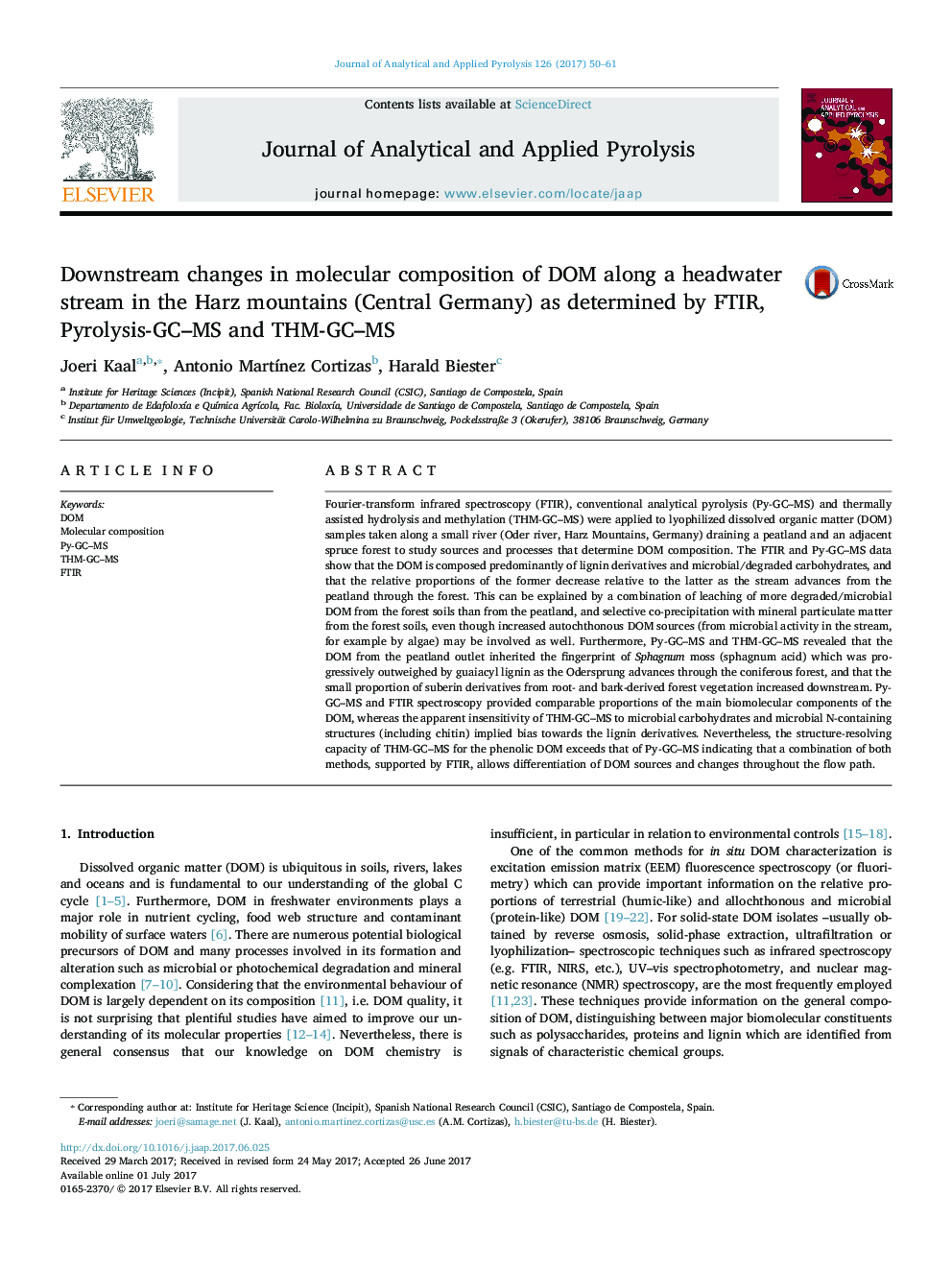| Article ID | Journal | Published Year | Pages | File Type |
|---|---|---|---|---|
| 5134657 | Journal of Analytical and Applied Pyrolysis | 2017 | 12 Pages |
â¢Molecular characterization of DOM by FTIR, Py-GC-MS and THM-GC-MS.â¢Microbial DOM replaces peatland-derived DOM along the river transect.â¢DOM quality controlled by source materials and mineral co-precipitation.â¢Only a combination of techniques allows reliable DOM quality assessment.
Fourier-transform infrared spectroscopy (FTIR), conventional analytical pyrolysis (Py-GC-MS) and thermally assisted hydrolysis and methylation (THM-GC-MS) were applied to lyophilized dissolved organic matter (DOM) samples taken along a small river (Oder river, Harz Mountains, Germany) draining a peatland and an adjacent spruce forest to study sources and processes that determine DOM composition. The FTIR and Py-GC-MS data show that the DOM is composed predominantly of lignin derivatives and microbial/degraded carbohydrates, and that the relative proportions of the former decrease relative to the latter as the stream advances from the peatland through the forest. This can be explained by a combination of leaching of more degraded/microbial DOM from the forest soils than from the peatland, and selective co-precipitation with mineral particulate matter from the forest soils, even though increased autochthonous DOM sources (from microbial activity in the stream, for example by algae) may be involved as well. Furthermore, Py-GC-MS and THM-GC-MS revealed that the DOM from the peatland outlet inherited the fingerprint of Sphagnum moss (sphagnum acid) which was progressively outweighed by guaiacyl lignin as the Odersprung advances through the coniferous forest, and that the small proportion of suberin derivatives from root- and bark-derived forest vegetation increased downstream. Py-GC-MS and FTIR spectroscopy provided comparable proportions of the main biomolecular components of the DOM, whereas the apparent insensitivity of THM-GC-MS to microbial carbohydrates and microbial N-containing structures (including chitin) implied bias towards the lignin derivatives. Nevertheless, the structure-resolving capacity of THM-GC-MS for the phenolic DOM exceeds that of Py-GC-MS indicating that a combination of both methods, supported by FTIR, allows differentiation of DOM sources and changes throughout the flow path.
